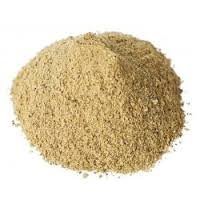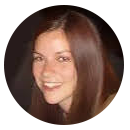How to Grow Your Own Dream Herb Garden
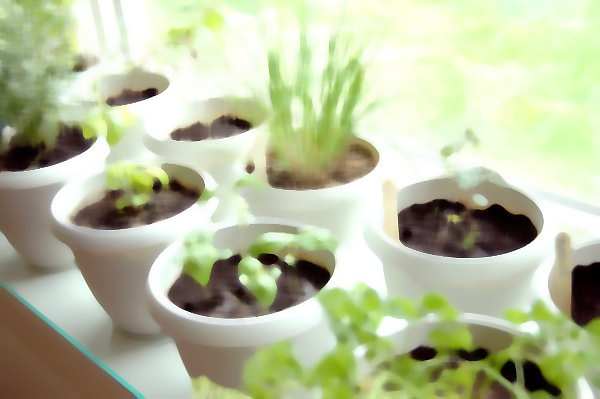
"Dream herbs are used to induce lucid dreaming, which, most accurately is described as an awareness that you are dreaming to the point that you can control dreams. But, on a more basic level, dream herbs also seem to be linked to increased dream recall or simply an awareness that you are dreaming even if you cannot control the dream."
- World Seed Cultivation Database
Today I'm going to summarize the best dream herbs for lucidity - as well as where to buy the seeds, how to grow and cultivate them, and what effects that have on your dreams.
These herbs will have noticeable intensifying effects on their own. However, coupled with your lucidity training, they can produce truly awesome lucid dreams.
Grow or Buy?
The most convenient way to get your hands on a dream herb is to buy it online at Amazon. They come in a variety of forms including dry leaf, powder, capsules and liquid tinctures.
However, if you're a frequent user of dream herbs then a cheaper way is to grow your own dream herb garden.
The upside is you'll have an abundant supply of fresher leaves which are more potent. You can also take cuttings, grow more for free, and give them to your friends who claim they never, ever dream. Then stand back.
Step 1 - Choose Your Dream Herb
Here are my top three picks for growing in your herb garden. Unless you live in a very mild climate, these are best cultivated year-round indoors by a sunny window.
 Calea Zacatechichi
Calea Zacatechichi
This is a popular one. It's also one of the easiest plants to cultivate, grow, harvest and preserve.
Originating from the indigenous people of Chontal in Mexico, they used this herb to have intense night-time visions; to predict the location of lost loved ones and determine the cause of diseases. They smoked the leaves of Calea Z before bed, inducing crazy and inspired dreams.
 Silene Capensis
Silene Capensis
Another good choice - also known as African Dream Root - native to the Eastern Cape of South Africa. Its name means "white ways" or "white paths". The root induces vivid and lucid dreams and was used by native Xhosa people during the initiation process of shamans.
It's easily grown given plenty of moisture and does actually tolerate extremes of temperature. It produces fragrant flowers which, rather poetically, open at night and close in the day.
Buy Silene Capensis seeds here.
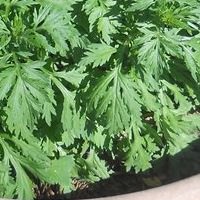 Mugwort
Mugwort
As a medicinal plant, Mugwort is used to treat gastric and skin disorders, as well as to add flavor to cooking.
For our purposes, it's famous for improving dream recall and dream vividness, and can reliably produce lucid dreams (although your knowledge and practice of lucidity helps).
Step 2 - Choose Your Sleep Aid
If you have difficulty sleeping (especially when you're excited about trying out your new dream herb) then grow a sleep herb in your garden too. These work well alongside the above mentioned herbs.
 Passion Flower
Passion Flower
It's virtually impossible to sleep when you have a racing mind or tight muscles. Passion flower combats this as a natural muscle relaxant, a sleep aid and an anti-anxiety herb. It helps you reach pleasant and anxiety-free states of mind, which also reduces the chances of having any nightmares.
Buy Passion Flower seeds here.
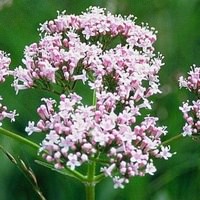 Valerian Root
Valerian Root
Another medicinal plant, Valerian is can have sedative and anti-anxiety effects when taken regularly for two or more weeks. Native to Europe and parts of Asia, it's used to treat insomnia and anxiety as an alternative to benzodiazepines. A meta study in 2006 found it to "improve overall sleep quality without producing side effects". It has heads of sweet-scented pink or white flowers.
Step 3 - Grow and Cultivate
> Start your seedlings indoors where they're not exposed to extreme temperatures, wind, rain or animals which can destroy them in a second.
> Make sure the soil is moist, but not soaking (too wet and the seeds can develop mold). Sow your seeds into a potting mix or a well-drained sandy soil for best results.
> Generally speaking, the smaller the seed, the shallower you want to sow it. Some will barely need any soil covering at all (1-2mm).
> Seeds need to be covered and kept warm. A fluorescent desk lamp will help them germinate, while a cover will help prevent them drying out (remove it every now and then for air flow and to prevent mold).
> Water the seeds lightly every day. When they are very small, just mist them. Don't pour water in and risk damaging them or washing them away. Even after several weeks, the seedlings can be quite fragile.

> You can add a rooting hormone to the water to help the seedlings mature faster. This will increase their chances of survival as well.
> Expose the plants to direct sunlight to promote growth - window lighting is enough. Once they're 3-4 inches tall you're out of the rough and can transplant (carefully) if needed. Just don't touch or damage the roots.
> You can create more dream herbs by taking cuttings of your existing plants, dipping them in rooting hormone and planting in a separate container. Look after them closely until they take root.
Step 4 - Harvest Your Herbs
It's best to use your dream herbs fresh. Just like cooking. When harvesting the leaves, snip up to one-third of the stem length regularly to encourage branching and new growth.
If needed, you can preserve your herbs by hanging the stems in a warm, airy place to dry them out. Then put them in an airtight container or bag. Store them in the refrigerator and they'll be good for up to two years.

Step 5 - Take Your Dream Herbs
With most of the herbs listed above, grind up the leaves and pack the extract into gel capsules.
Alternatively, you can smoke it or brew it as a tea. Take your sleep herbs before bed and dream herbs after 4-6 hours of sleep. Then go back to bed and practice a lucidity technique like MILD or meditation.
The exceptions are Silene Capensis and Valerian, where the active ingredient is in the roots. Either chew the roots, brew them into tea, or grind them into a fine powder and mix with water, drinking the foam.
Do you grow your own dream herbs? What's your favorite? Share your comments below or skip to our lucid dreaming forum for in-depth discussion.
Related Article: Sleep Herbs

